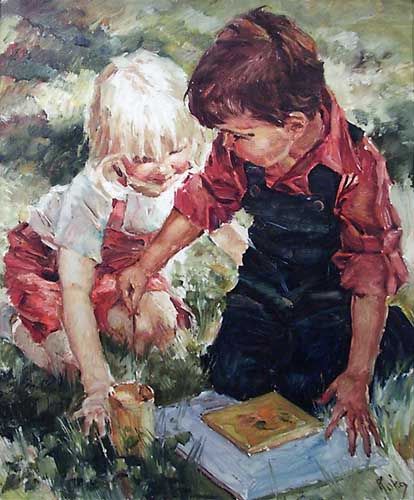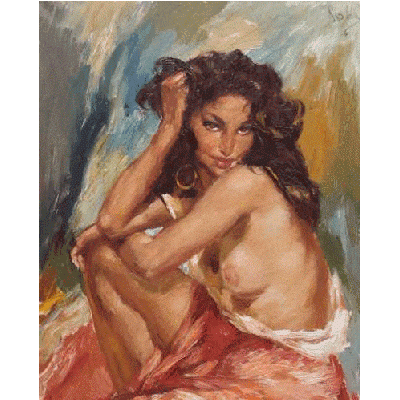Charles Roka (1912-1999)
Get a Roka Certificate of Authenticity for your painting (COA) for your Roka drawing.
For all your Roka artworks you need a Certificate of Authenticity (COA) in order to sell, to insure or to donate for a tax deduction.
Getting a Roka Certificate of Authenticity (COA) is easy. Just send us photos and dimensions and tell us what you know about the origin or history of your Roka painting or drawing.
If you want to sell your Roka painting or drawing use our selling services. We offer Roka selling help, selling advice, private treaty sales and full brokerage.
We have been authenticating Roka and issuing certificates of authenticity since 2002. We are recognized Roka experts and Roka certified appraisers. We issue COAs and appraisals for all Roka artworks.
Our Roka paintings and drawings authentications are accepted and respected worldwide.
Each COA is backed by in-depth research and analysis authentication reports.
The Roka certificates of authenticity we issue are based on solid, reliable and fully referenced art investigations, authentication research, analytical work and forensic studies.
We are available to examine your Roka painting or drawing anywhere in the world.
You will generally receive your certificates of authenticity and authentication report within two weeks. Some complicated cases with difficult to research Roka paintings or drawings take longer.
Our clients include Roka collectors, investors, tax authorities, insurance adjusters, appraisers, valuers, auctioneers, Federal agencies and many law firms.
We perform Charles Roka art authentication, appraisal, certificates of authenticity (COA), analysis, research, scientific tests, full art authentications. We will help you sell your Charles Roka or we will sell it for you.

Charles Roka was a Hungarian painter living in Norway whose name became synonymous with an excess of artistic kitsch. Roka was born in Hungary in 1912. After he finished his studies on the Academy of Fine Arts in Budapest he went to a European journey. In 1937 he finally settled in Norway, and lived in Bærum, outside Oslo until his death.

Roka attended one year at the Academy in Oslo. In 1939 he painted his first picture of the half-naked Gipsy Girl whom he had seen in Marseille a few years earlier. It is Roka’s numerous variations of this Gipsy Girl which made his financial success as a painter, but misfortune as an artist.

Roka was despised by the art world, he was nevertheless loved by the people. He became famous for his numerous variations of the Gipsy Girl, exotic looking Gypsies in a pin-up style and sentimental portraits of children with their pet dogs. His other favorite subjects were Hungarian folklore, especially Gipsy people dancing csárdás.

Roka had several exhibitions in Madrid, Barcelona, and Lausanne and he was very popular among the average Scandinavian people. In 1982 illness stopped him working. In 2005 Haugar Vestfold Kunstmuseum held a summer exhibition under the title Prince of Kitsch displaying about 80 of his works. It was the first time that a venerable art gallery let Roka’s works within its walls.

Still wondering about a Norwegian painting in your family collection? Contact us…it could be by Charles Roka.
Reviews
1,217 global ratings
5 Star
4 Star
3 Star
2 Star
1 Star
Your evaluation is very important to us. Thank you.
